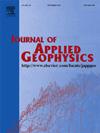Magnetic diagnosis model for heavy metal pollution in beach sediments of Qingdao, China
IF 2.2
3区 地球科学
Q2 GEOSCIENCES, MULTIDISCIPLINARY
引用次数: 0
Abstract
Magnetic techniques have been widely used in recent decades to determine heavy metal pollution in sediments due to their high sensitivity to magnetic particles and considerable measurement convenience. Beaches are usually greatly influenced by human activities, but pollution problems such as heavy metal pollution due to sewage discharge, nearby factories, and garbage disposal have reduced the tourism value and ecological environmental quality of beaches. In this study, three beaches in Qingdao city were chosen as examples, and a magnetic diagnostic model for heavy metal pollution in beach sediments was established using statistical methods. The results showed that beach No. 1 in Qingdao was not polluted, while the pollution level of beach No. 2 was lower than that of beach No. 3. Beach No. 2 exhibited slight Cr and Zn pollution and slight Fe enrichment, while beach No. 3 exhibited slight to severe Cr, Ni, and Zn pollution and severe Fe enrichment. The statistical model results indicated that χ, saturation isothermal remanent magnetization (SIRM), SOFT, and χARM are more suitable for establishing magnetic diagnostic models, and the pollution level, pollution source and diffusion range of heavy metal elements could be detected with this model. The main causes of pollution are sewage outlets and the disposal of artificial coal ash. When the magnetic susceptibility value of the 0.063–0.125 mm particle size fraction of Qingdao beach sediments is greater than 6000 × 10−8 m3kg−1, attention should be given to possible contamination by heavy metals. In this study, we revealed that environmental magnetic methods can be employed to effectively determine the pollution level, source, and diffusion of heavy metals in beach sediments, which can facilitate the management of heavy metals and other pollutants in beach sediments and ecological environmental protection.
中国青岛海滨沉积物重金属污染磁力诊断模型
近几十年来,磁性技术因其对磁性颗粒的高灵敏度和相当大的测量便利性而被广泛用于测定沉积物中的重金属污染。海滩通常受人类活动影响较大,但由于污水排放、附近工厂、垃圾处理等造成的重金属污染问题,降低了海滩的旅游价值和生态环境质量。本研究选取青岛市的三个海滩为例,利用统计学方法建立了海滩沉积物重金属污染磁性诊断模型。结果表明,青岛 1 号海滩未受污染,2 号海滩的污染程度低于 3 号海滩。2 号海水浴场表现为轻度铬、锌污染和轻度铁富集,3 号海水浴场表现为轻度至重度铬、镍、锌污染和重度铁富集。统计模型结果表明,χ、饱和等温剩磁(SIRM)、SOFT 和 χARM 更适合建立磁诊断模型,利用该模型可检测重金属元素的污染程度、污染源和扩散范围。污染的主要原因是排污口和人工煤灰的处理。当青岛海滨沉积物 0.063-0.125 mm 粒径部分的磁感应强度值大于 6000×10-8 m3kg-1 时,应注意可能受到重金属污染。本研究揭示了利用环境磁法可以有效地确定海滩沉积物中重金属的污染程度、来源和扩散情况,有利于海滩沉积物中重金属等污染物的治理和生态环境保护。
本文章由计算机程序翻译,如有差异,请以英文原文为准。
求助全文
约1分钟内获得全文
求助全文
来源期刊

Journal of Applied Geophysics
地学-地球科学综合
CiteScore
3.60
自引率
10.00%
发文量
274
审稿时长
4 months
期刊介绍:
The Journal of Applied Geophysics with its key objective of responding to pertinent and timely needs, places particular emphasis on methodological developments and innovative applications of geophysical techniques for addressing environmental, engineering, and hydrological problems. Related topical research in exploration geophysics and in soil and rock physics is also covered by the Journal of Applied Geophysics.
 求助内容:
求助内容: 应助结果提醒方式:
应助结果提醒方式:


